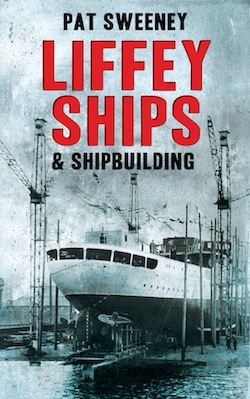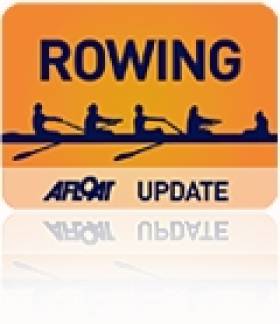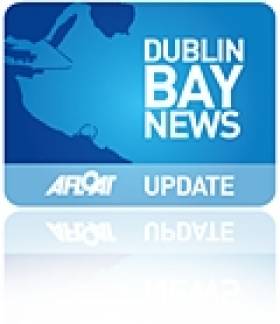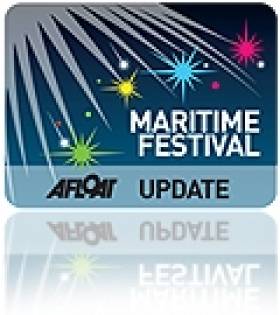Displaying items by tag: liffey
Four In-A-Row for UCD in Gannon Cup
UCD beat Trinity by four and a half lengths in the Gannon Rowing Cup for senior men on the river Liffey in Dublin yesterday. It was their fourth consecutive Gannon and it headed up a clean sweep of colours titles in the new St Patrick’s Day slot. The Corcoran Cup for senior women was a close race, with UCD winning by three-quarters of a length, but Trinity’s novice women and novice men were well beaten.
Colours Races, River Liffey, Dublin
Gannon Cup (Senior Men): UCD (C Pierce, R Murray, S O’Neill, D Neal, F Manning, S Jacob, G Duane, P Grogan; cox: J Lynch) bt Trinity 4½l. Dan Quinn Shield (Novice): UCD bt Trinity 4l.
Corcoran Cup (Senior Women): UCD (C Tanner, K Joy, C Ni Reachtagain, A Bulman, S Bennett, A Gilligan, L Reid, B Lait; cox: C McGowan) bt Trinity ¾l. Moorhead Trophy (Novice Women): UCD bt Trinity 5l.
Click this link for the Latest Rowing News
City Powerboat School on the Market
Due to an opportunity for its owners overseas Dublin City's only powerboat training school, City Powerboat School is on the market. The Irish Sailing Association recognised training establishment is advertised in next week's edition of Afloat magazine. The school operates in the 'highly visible' River Liffey area. School principal Felix Finlay says 'the position of the school in Dublin City has attracted many enquiries, for not only powerboat training courses, but sail training, tourism activities, and educational opportunities'. More here.
Brian O'Dwyer Wins Liffey Swim (Results HERE)
The 90th annual Dublin Liffey Swim sponsored by Dublin City Council took place today, Saturday 11th September 2010. The swim, a 2.2kilometre race, started at Watling Street Bridge and finished at the Customs House. The swimmers were each assigned a time handicap depending on their level of proficiency.
Dublin City Council's 90th Liffey Swim Race 11th September 2010 - Men's & Women's Results
Men's Event – 13.30hrs Start
Winner - Brian O'Dwyer, Guinness Club (no handicap).
Second place - Terry Joyce, Eastern Bay Club (no handicap).
Third place - Vinnie Nicoletti, Guinness Club (no handicap).
Women's Event – 14.15hrs Start
Winner - Deirdre Dunne, St. Vincents Club (handicap 45 seconds).
Second place - Maeve Dunne (no handicap).
Third place - Susan Ritchie, Tallaght Masters Club (no handicap).
Mega Yacht 'Skat' Moored on the River Liffey
It's not often we get a mega yacht (a private boat above 70m or 230 feet) in Dublin bay. The Skat is currently lying on Sir John Rogerson’s Quay. Click HERE and have a look at the images at the bottom of the page.
According to Wikipedia The Skat is a luxury yacht built by Lürssen of Bremen, Germany as project 9906, a number prominently displayed on the hull in a font matching that of military vessels. The project started in November 1999 and the yacht launched in 2001. The owner is Charles Simonyi, a former Software Engineer from Microsoft and the fifth space tourist. The yacht is the 64th-largest in the world with a length of 71 metres.
Liffey Ship Building Story Brought to Life for First Time
To the vast majority of people, when shipbuilding in Ireland is mentioned, they think only of Belfast, the Harland & Wolff shipyard and the tragic maiden voyage of the Titanic in 1912.
However, there was a vibrant shipbuilding industry in Dublin for nearly two centuries and the story of the different shipyards, the ships they produced and the people who worked there is told here for the first time. Pat Sweeney provides a comprehensive examination of the origins and progress of shipbuilding and ship repair on the Liffey, and documents the progression of the shipbuilding industry in Dublin from its early days at the Walpole and Webb shipyard, through the boom periods of the First and Second World Wars, to the gradual decline of the industry in the late twentieth century.
Pat Sweeney was the Editor of the Maritime Institute of Ireland's journal for 22 years. He was also the only Dublin-based photographer for Lloyds List, London's premier shipping journal, and has contributed several articles on Irish and international shipping to the Irish Independent.

Liffey Ships & Shipbuilding is published in paperback at €19.99
Docklands Maritime Festival on the River Liffey
Dublin's thriving Docklands area is the place to be this June Bank Holiday weekend, with the seventh annual Docklands Maritime Festival running from 4th of June to 7th of June 2010.
Hop on board a ship and see what life is like on the high seas
With a record 150,000 visitors at last year's Festival, this year's event takes place on the quays both north and south of the Liffey with attractions for all ages. The river will be a buzz of activity and the tall ship, Jeanie Johnston will welcome visiting tall ships, Artemis, Bessie Ellen, Notre Dame de Rumengol and the Irish naval vessel, L. E. Aoife, giving people the chance to experience first hand what life on the ocean waves is like.
Dublin's river tour service, the Liffey River Cruise, will be in operation offering relaxing cruises along the river.
Enjoy imaginative theatrical performances throughout the festival
Alongside the stunning tall ships, there will be plenty of entertainment for all the family including a breathtaking array of street theatre, musical entertainment and amusements all creating a fun carnival atmosphere. New to this year’s festival is Bui Bolg from Co. Wexford, who are experts in the field of spectacle and street theatre. Bringing pirates, sea horses and stilt-walking Dublin Bay prawns to the riverside, Bui Bolg offer a combination of originality, impeccable professionalism, a unique sense of humor with just a touch of mischief to add to the magic!
Conor Lambert’s Custard Pie Puppet Theatre will perform four free puppet shows a day in the chq building to keep the younger visitors amused!
Sing and dance along to funky music acts on two live stages
Music acts on the riverside include the bubblegum American sounds of the Andrews Sisters with The Bugle Babes who will perform on the Friday evening and Monday lunchtime of the festival. Gypsy Jazz Quartet and The Swinging Blue Cats return again this year with their jazzy, jive and swing numbers and will be joined by The Roaring Forties from Cork who will bring their own blend of jazz and swing. Brand new this year is ‘Soul Purpose,’ a six piece band who will deliver some timeless soul and funk music on the quayside, and ‘Roots and Rye’ a Dublin based five piece country and roots band. Tango Ireland will bring the south campshires alive during the festival with free performances of this popular and sophisticated dance from Argentina.
See the brave take to the water and protect or shores
In the water, swimmers from all over Dublin will take part in the annual Docklands Swim, which takes place on Saturday, 5th June during the Docklands Maritime Festival. This challenging 1.1 kilometre swim is organised by the NAC Masters Swimming Club and is the first swim of a series of 30 races over the Summer. The best viewing areas will be from the Sean O’Casey and Samuel Beckett Bridges.
The Coast Guard and RNLI will also be on hand to add to the maritime activity and on Sunday, June 6th the Coast Guard Helicopter will to do a fly over along the Liffey and perform a mock water rescue.
Then fit in time for a spot of lunch and some shopping
The Festival will also feature the biggest (and best!) outdoor market in the city, with a fabulous selection of crafts, clothing, jewellery, paintings, flowers and plants, as well as the mouth-watering gourmet meats, cheeses and breads.
Hop on the Luas to the Docklands Maritime Festival
Luas is partnering with the Docklands Authority to offer 10,000 free tickets over the June Bank Holiday weekend to celebrate the opening of the extension of the red line to Dublin’s Docklands. With 4 stop just minutes walk away, there’s no better way to travel to the Docklands Maritime Festival.
The Docklands Maritime Festival takes place from 4th to 7th June, 2010. Opening hours are from 1pm Friday 4th to 10 pm, Saturday 5th 10am to 10pm, Sunday 6th 10am to 8pm and Monday 7th 10am to 6pm. No tickets required.
To plan you visit to the Docklands Maritime Festival, go to www.dublindocklands.ie/maritime

































































